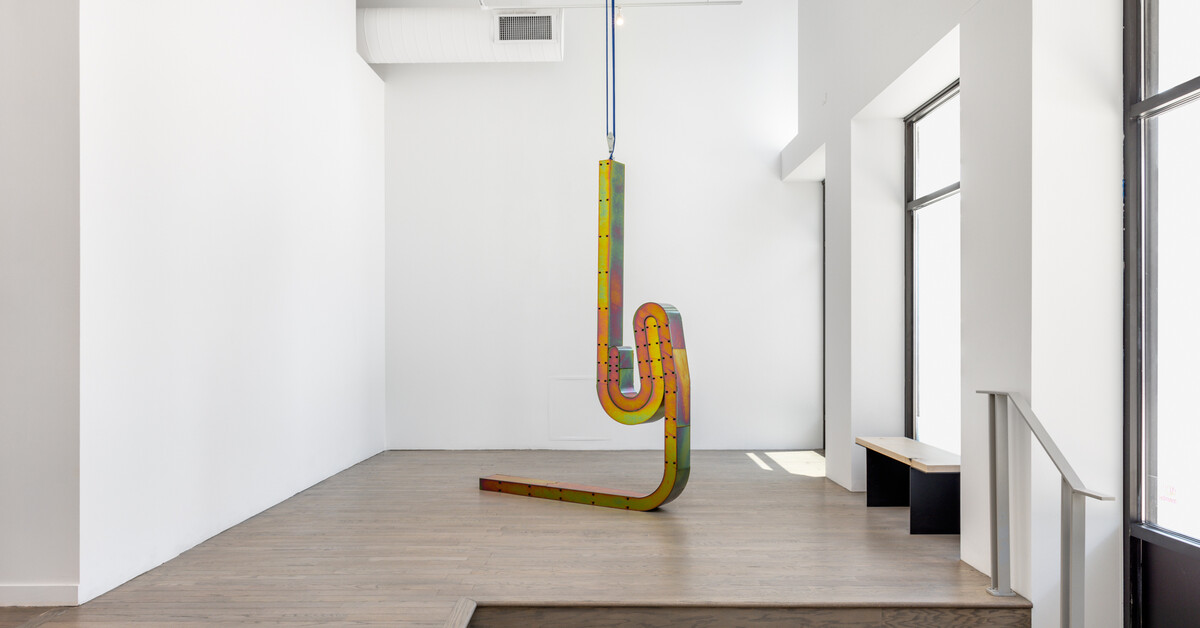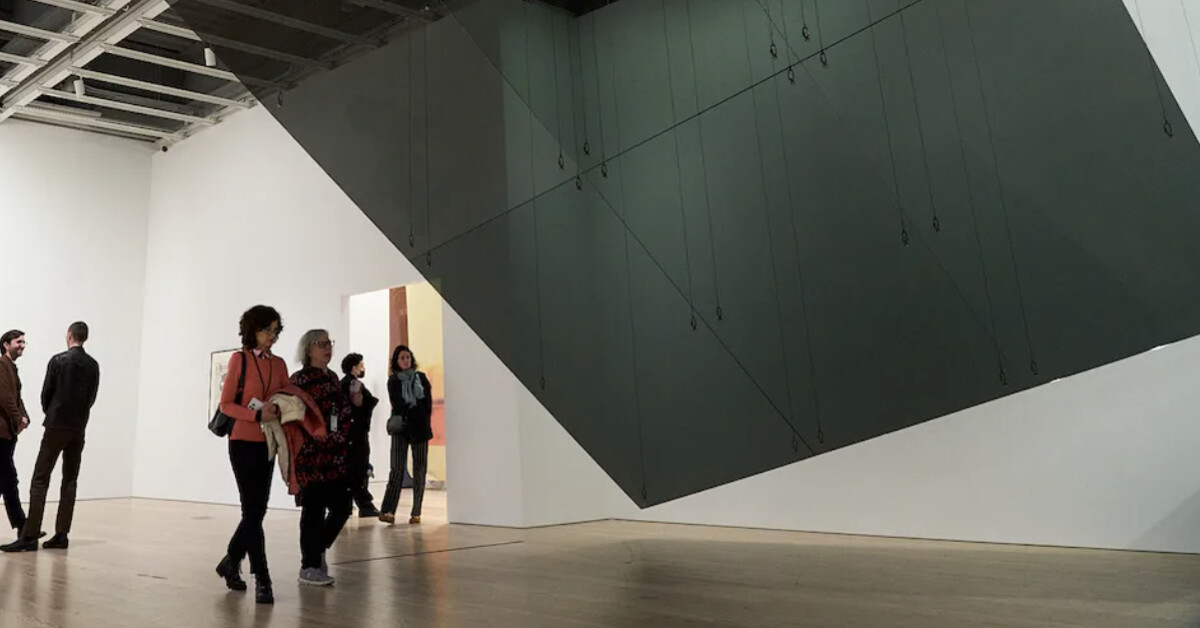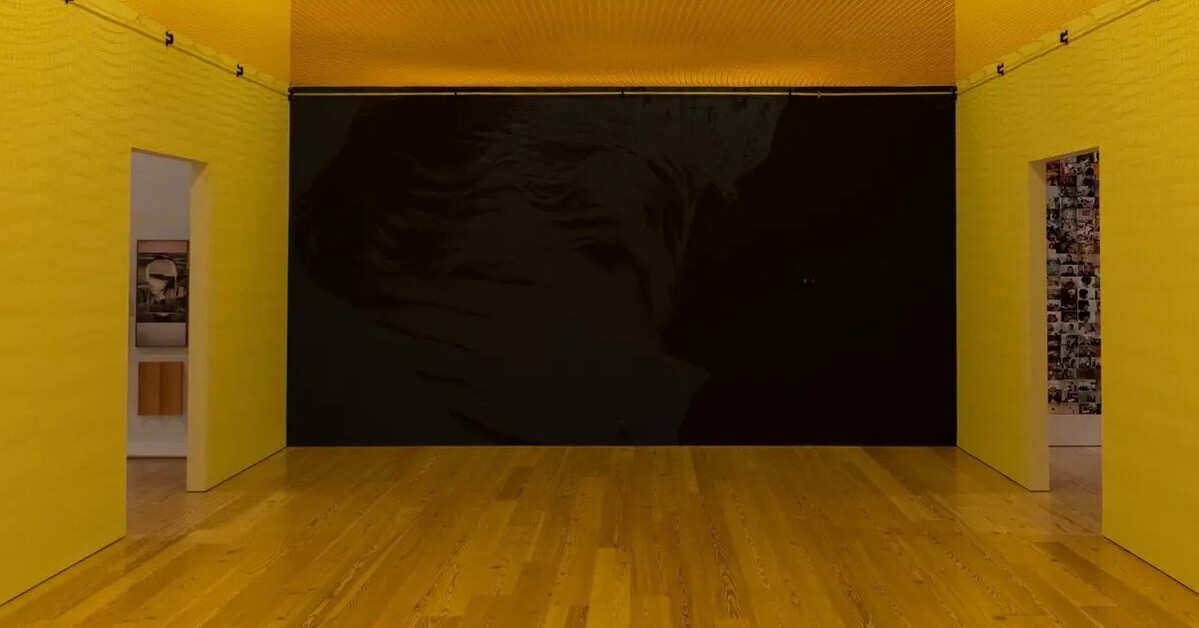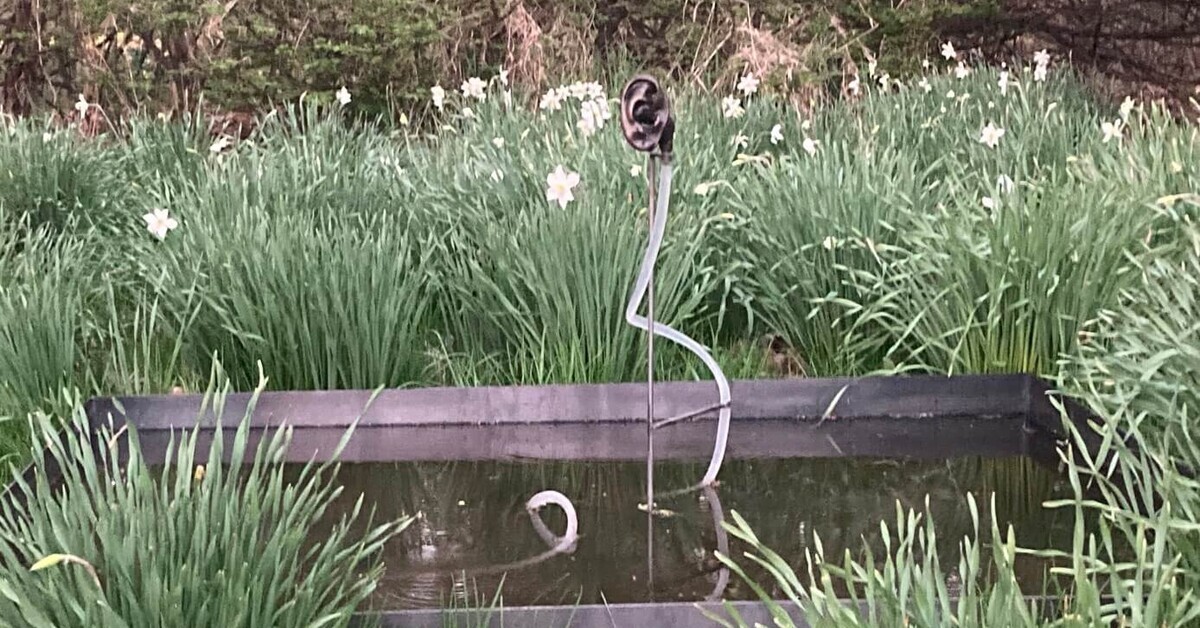Was the Vision for the 2024 Whitney Biennial ‘Better Than the Real Thing’?
Cultured / Mar 13, 2024 / by John Vincler / Go to Original
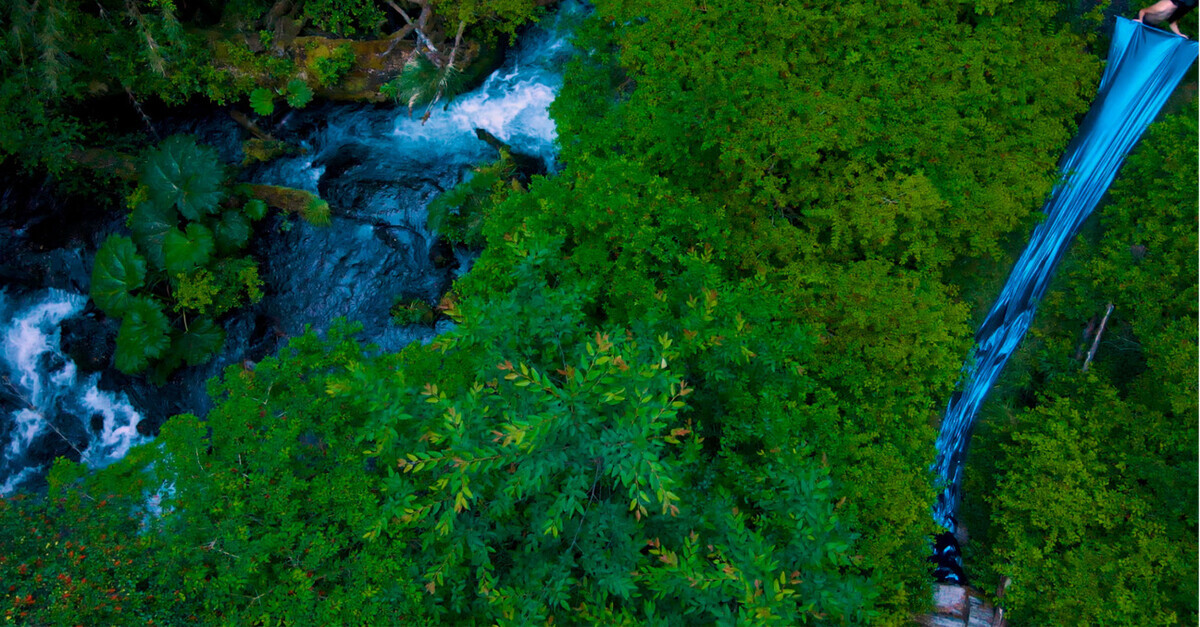
Seba Calfuqueo, TRAY TRAY KO (Film Still), 2022. Photography by Sebastian Melo. Image courtesy of the artist.
The Chilean artist, Seba Calfuqueo, drags glossy blue fabric, like the overlong train of a dress, across the jungle floor, then up a steep incline to the natural pool at the base of a cascading waterfall. The scene, from her video work “TRAY TRAY KO” (2022), performs a sort of painting across a natural landscape.
The projected video is tucked into a dark corner on the sixth floor of this year’s Whitney Biennial, in a room that opens into a larger, light-filled gallery inhabited entirely by several works by the Georgia-based artist Suzanne Jackson: brilliant, brightly painted abstractions hang from the ceiling or on the walls, by hooks and cables without canvas supports. They are translucent, like stained glass windows, but made instead of flowing layers of acrylic paint—incorporating recycled textural elements like shredded mail and the plastic netting from produce packaging.
The very best of the 2024 Biennial comes in juxtapositions like this pairing that invite dialogues across works, artistic mediums, between genders and even generations (Calfuqueo, born 1991; Jackson, born 1944). Here, the artists develop complementary approaches to subtle ecological themes.
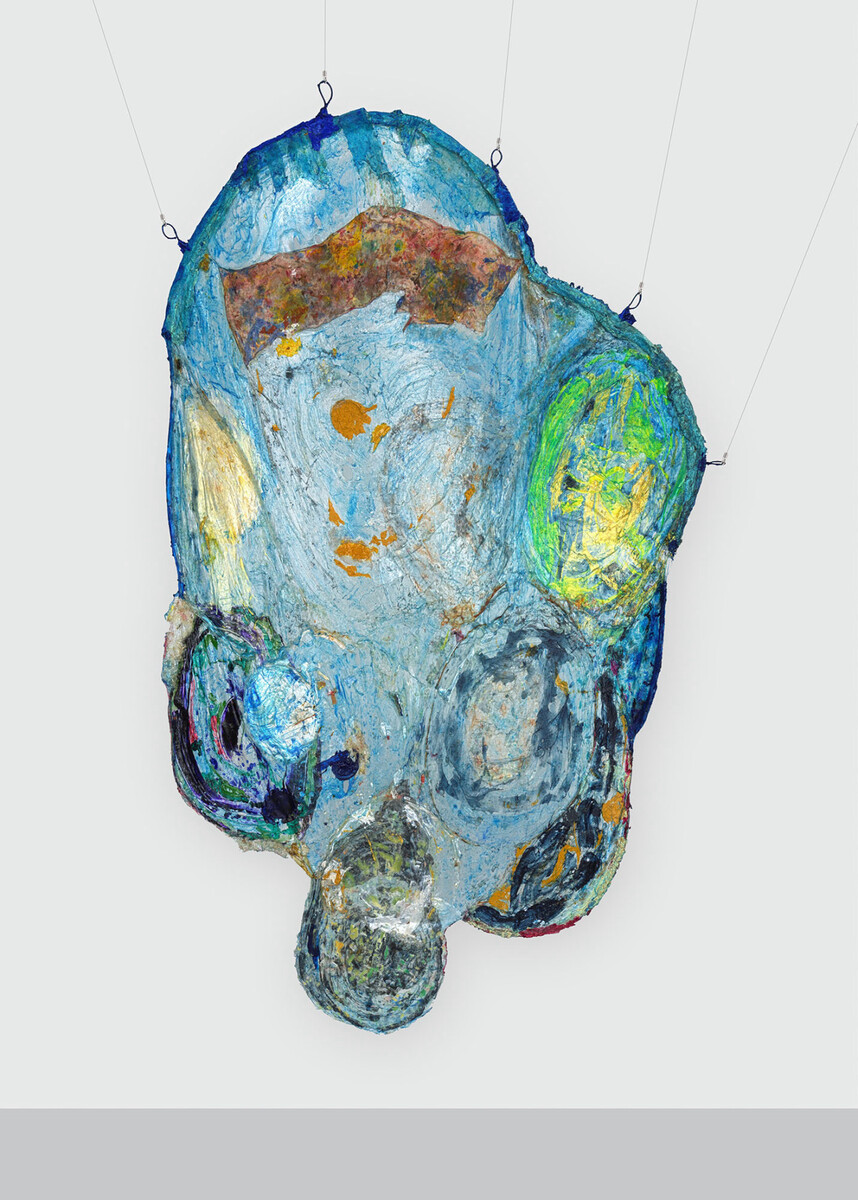
Suzanne Jackson, Rag-to-Wobble, 2020. Photography by David Kaminsky. Image courtesy of the artist and Ortuzar Projects.
In this, the 81st edition of the longest-running survey of American art, the curators Chrissie Iles and Meg Onli, purport to organize their exhibition around the concept of “the real,” with the cringey subtitle “Even Better Than the Real Thing.” But rather than curatorial statements, it’s the work of the 71 artists and collectives they have gathered across four floors of the Whitney’s building and in a scheduled series of films and performances that have the final say. The results are stimulating, if uneven, with the weakest offerings isolated to a single floor of the museum. “We keep going backwards,” says a queer elder, one of a group in Tennessee being interviewed by Sharon Hayes, in an affecting two-channel documentary video work, the fourth in her decades-long “Ricerche” series. The statement reflects recent events like the state’s attempt to ban drag shows and the overturning of Roe v. Wade. A circle of homey, mismatched chairs for viewing the work, as well as quick cuts between the two monitors (that also rest on chairs), encourage viewers to settle in to listen as if a participant. A few rooms over, the themes of absence and time play out in a ghostly and rhythmic piece, “Tempo Rubato (Stolen Time)” (2023-24) by Nikita Gale, which incorporates a fading spotlight and a player-piano that clatters and clanks a score with mechanically suppressed keys without ever sounding a note.
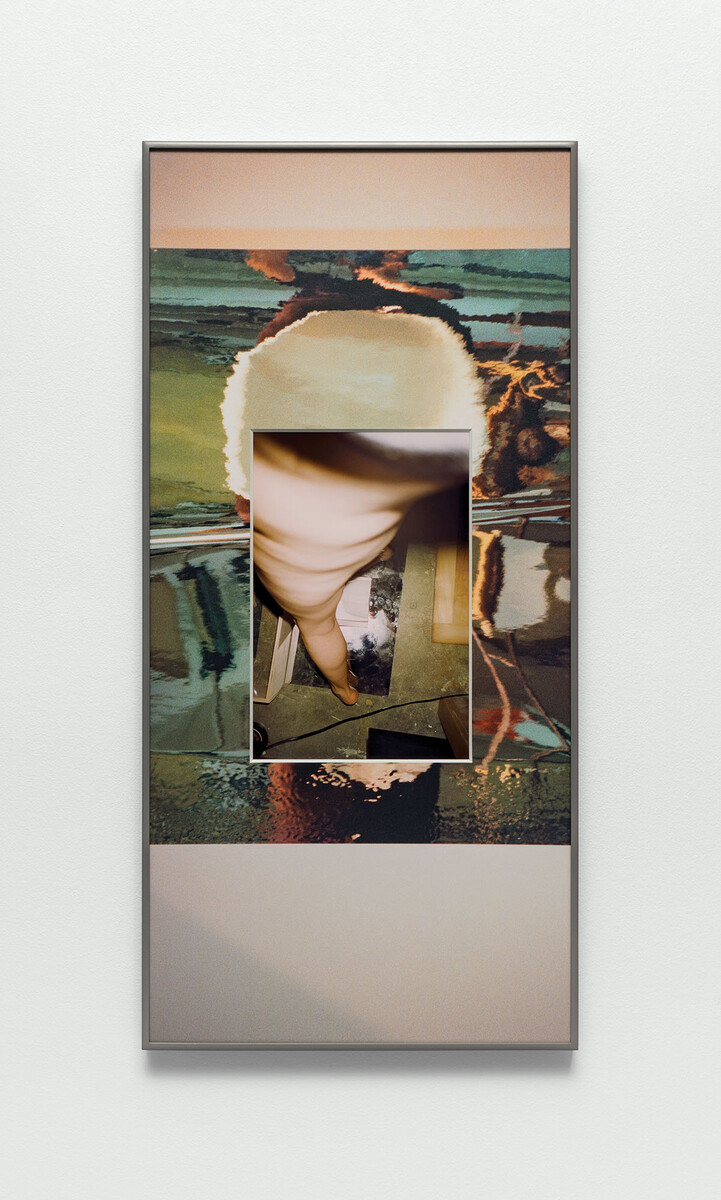
B. Ingrid Olson, Completed Movement (between abut and rub between two notes the number between one and two divided into qualities and kinds), 2016–22. Photography by Robert Chase Heishman. Image courtesy of the artist from the collection of Dan Byers.
Around the corner, the 30 constituent parts of Chicago-based artist B. Ingrid Olson’s “Proto Coda, Index” (2016-22) are replicas of relief sculptures made previously by the artist, here composed primarily with medium-density fiberboard. The resulting forms suggest that they could either be worn or that parts of the body could be fitted into them. The intermixed photo works, part of Olson’s ongoing “Dura” series, either record partial portraits or record performances with sculptural props in the artist’s studio, abstracting the body through the use of mirrors and photographs-within-photographs, resulting in fractured, almost architectural images that enfold shifting perspectives and moments in time.
Continuing down the hallway leads to a room overcome by Carmen Winant’s epic photo-grid work, “The Last Safe Abortion” (2023). Incorporating some 2,700 photographs, the wall of images records the quotidian tasks required to provide safe abortion care in healthcare facilities. A note in the description provides the most touching detail: Winant’s commitment to building trust within communities. “Every sitter pictured from recent years has given their permission to appear in this installation,” it reads. It’s a rare moment when the curators’ word “real” attains much gravitas.
However eclectic, this series of works, all on the sixth floor, is mostly a triumph. This momentum continues on the fifth floor with Tourmaline’s video tribute to the trans activist and icon Marsha P. Johnson in the video-work “Pollinator,” intercutting found footage of Johnson and her memorial service with Tourmaline herself in gardens and in interiors with flowers to create an elegy more sublime than mournful.
Yet the rest of floor five—consisting mostly of paintings and sculptures—feels muddled and anchored sentimentally, rather than historically, to the past. Even an excellent installation by Dala Nasser that combines painting and sculpture gets dragged down by the conventional outmoded feel of the work that surrounds it. A neon text work by Demian DinéYazhi’ (born in New Mexico, Navajo Nation), stands out as an exception. As if turning its back on the floor, the work is oriented toward the exterior window looking out across the West Side Highway to New Jersey with the Hudson River below. The work’s title, “We Must Stop Imagining Apocalypse / Genocide + We Must Imagine Liberation” (2024), condenses the full text it contains in its flickering red glow.
The single-artist presentations on the floors below feel divorced from the whole. On the third floor, Pippa Garner’s clever riffs on Midwestern car culture, desire, and the body feel perfunctory in this often-awkward space. But, on the first floor, Ser Serpas’s sprawling installation (with an equally sprawling page-long title), provides both the full-stop and the saving grace the Biennial requires. Like a sculpture park out of some post-apocalyptic film, Serpas scavenged truckloads of items from New York streets: A gray exercise ball put atop a metal-legged accordion-folding contraption looks like a Louise Bourgeois “Spider,” a fire hydrant on rolling shelves like a body on a gurney, a grocery cart placed on an exercise machine topped with a disco ball looks like an abstracted human figure. The American flag thrown on a sole corner-unit of a decades-old sectional looks like the soiled napkin left in the booth after a meal at a classic diner—a real concluding gesture.
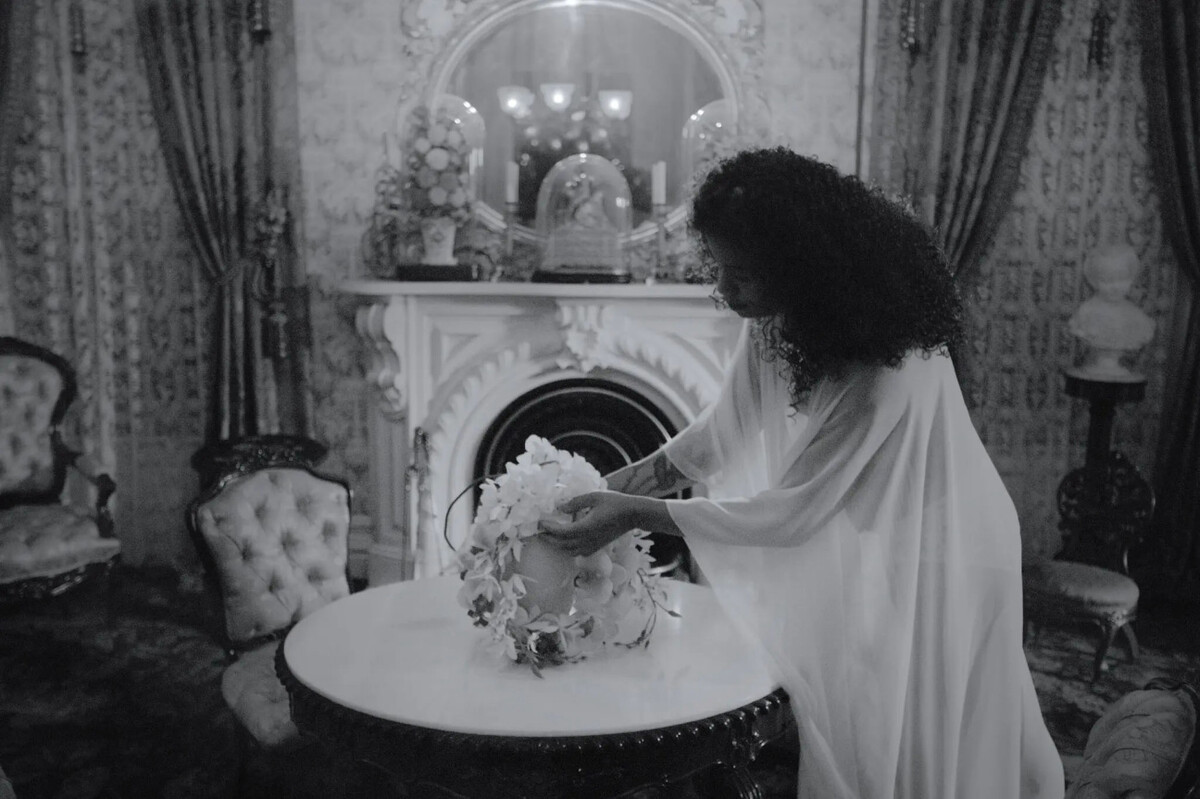
Tourmaline, Pollinator (Film Still), 2022. Image courtesy of the artist and Chapter, NY.

